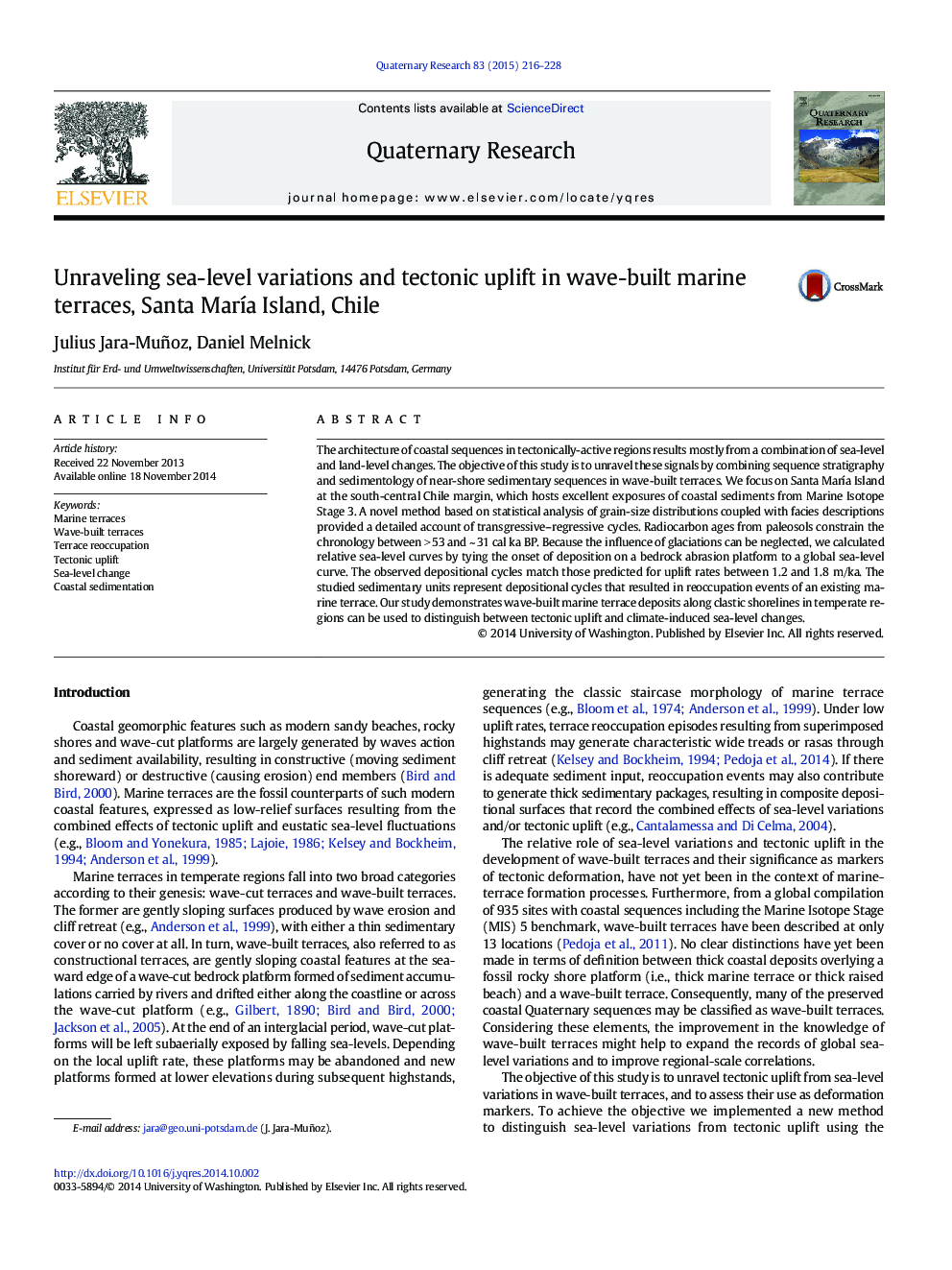| Article ID | Journal | Published Year | Pages | File Type |
|---|---|---|---|---|
| 1045196 | Quaternary Research | 2015 | 13 Pages |
Abstract
The architecture of coastal sequences in tectonically-active regions results mostly from a combination of sea-level and land-level changes. The objective of this study is to unravel these signals by combining sequence stratigraphy and sedimentology of near-shore sedimentary sequences in wave-built terraces. We focus on Santa MarÃa Island at the south-central Chile margin, which hosts excellent exposures of coastal sediments from Marine Isotope Stage 3. A novel method based on statistical analysis of grain-size distributions coupled with facies descriptions provided a detailed account of transgressive-regressive cycles. Radiocarbon ages from paleosols constrain the chronology between > 53 and ~ 31 cal ka BP. Because the influence of glaciations can be neglected, we calculated relative sea-level curves by tying the onset of deposition on a bedrock abrasion platform to a global sea-level curve. The observed depositional cycles match those predicted for uplift rates between 1.2 and 1.8 m/ka. The studied sedimentary units represent depositional cycles that resulted in reoccupation events of an existing marine terrace. Our study demonstrates wave-built marine terrace deposits along clastic shorelines in temperate regions can be used to distinguish between tectonic uplift and climate-induced sea-level changes.
Related Topics
Physical Sciences and Engineering
Earth and Planetary Sciences
Geology
Authors
Julius Jara-Muñoz, Daniel Melnick,
